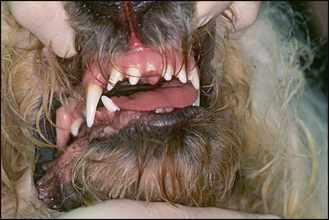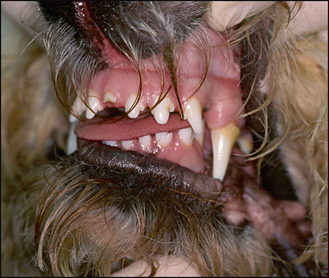27 Tooth shortening and endodontic therapy
CASE HISTORY
The dog was seen by its own veterinarian, who referred the case to us for evaluation and treatment.
ORAL EXAMINATION – CONSCIOUS
This was a nice-tempered dog that allowed thorough oral examination and occlusal evaluation (Figs 27.1 and 27.2).
ORAL EXAMINATION – UNDER GENERAL ANAESTHETIC
In summary, examination under general anaesthesia identified the following:





